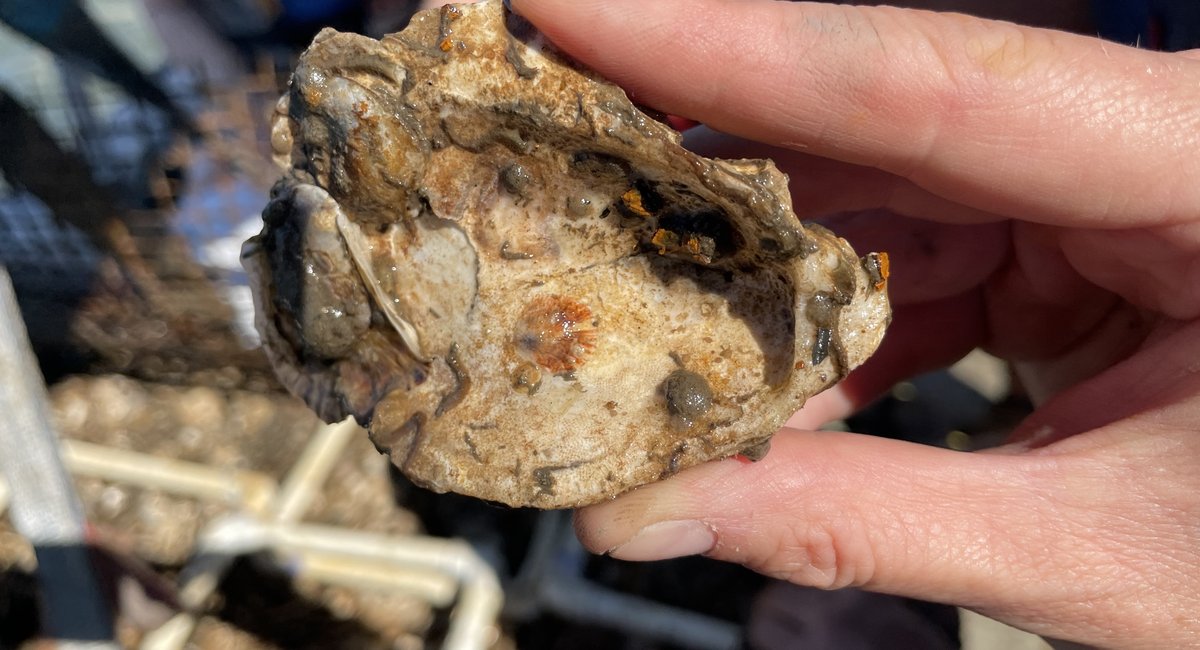Scientists seeking to restore New York Harbor’s oyster population are encountering a problem – about half of the bivalves they place in the water die.
New York City’s waters once teemed with oysters, and for the last decade, experts at the Hudson River Park Trust and Billion Oyster Project have been trying to restore their population to help naturally purify the city’s waterways and create a self-sustaining habitat.
But the groups say there are myriad reasons why the oysters – which they raise in hatcheries, place on artificial reefs and then drop in the harbor – are dying off in such large numbers.
Cold winters and predators are major factors. But the experts said one of the main challenges is that oysters tend to flourish in the presence of other oysters.
“The population of oysters [in NYC] is functionally extinct. There are some pockets here and there, but overall there’s no larval source,” said Meredith Comi, coastal resilience and restoration practitioner for the Urban Coast Institute at Monmouth University. “We have to do everything from scratch.”
Despite planting 122 million oysters in New York Harbor so far, experts say they haven’t yet reached the critical mass when the mollusks will begin reproducing on their own in significant numbers.
“There are challenges of just working in the most urban estuary on the planet with a lot of boat traffic, pollution, zero visibility and a lot of strong currents,” Comi said.
When Henry Hudson first sailed the river that would later bear his name, he described an immense bounty of oysters, with some as large as dinner plates. The Hudson estuary was “one of the most diverse and dynamic environments on the planet,” according to the Billion Oyster Project.
A pile of oyster shells outside two taverns at South Street and Pike Slip in Manhattan in 1937.
At one point, Pearl Street in Lower Manhattan was paved with oyster shells. By the 1880s, there were 220,000 acres of oyster beds in New York Harbor, though the population had already depleted substantially, according to a report by the EPA. In 1927, the last commercial oyster bed in New York City closed. Overharvesting and pollution destroyed the aquatic filter feeders.
Restoring the oysters is not easy, and the rate of return is low. Matt Hare, a Cornell University professor who works with the project, said there’s no clear evidence yet that the oysters they’re planting are reproducing on their own.
Carrie Roble, the project leader for the Hudson River Park Trust, said she’s hopeful that in the coming years some of the oysters they’ve planted will reach maturity and breed. Oysters, which can change genders, reproduce by releasing sperm and eggs. Fertilized eggs drift in the water column for two to three weeks. If they survive, they settle on a surface – including, possibly, artificial reef balls or cages.
“We’re putting out structures, but it’s like a needle in a haystack if they find them,” Comi said. “There’s not enough oysters out there to really have this population boom.”
A recent trip aboard a boat in the waters off Tribeca highlighted the challenges of returning New York Harbor’s oyster population to its glory days.
Field scientists pulled up a sampling of the reef balls and cages (called gabions) for an oyster census, of sorts. Some of the reef structures were bare. Others were teeming with life. Researchers said they were still gathering data to understand why one structure can be covered with bivalves while others cannot attract any.
“We’re just excited that we can collect this data, analyze it,” said Roble. “It’s going to inform future designs.”
Researchers with the Billion Oyster Project and Hudson River Park Trust checked the health of oysters in cages placed along the Tribeca waterfront.
Rosemary Misdary
Over the last three years, researchers have installed more than 250 oyster housing structures such as gabions (cages about the size of a vintage trunk) and reef balls (which look like big concrete globes with holes in them) between Piers 26 and 34. As part of their survey, scientists pull some of the structures up at random and measure how much of the surface is covered in oysters. Data shows that in 2022, as much as 95% of some reef structures were covered in oysters. But last year that dropped to a maximum coverage of 44%.
Roble said those figures are typical of oyster restoration efforts around New York Harbor.
“Because of the nature of low oyster populations in that system to naturally repopulate these areas and these structures, I’m not surprised by the slow process of recovery that they’re measuring,” said Jennifer Pollack, chair of coastal conservation and restoration at Harte Research Institute at Texas A&M University.
The Billion Oyster Project aims to deploy 1 billion of the mollusks by 2035.
Researchers involved in the effort say it’s vital to the local ecosystem. The oysters filter water, reducing pollution. Their reefs provide a safe habitat for marine life and reduce storm surge by breaking waves.
Oysters clean waterways by pumping water into their hairy gills, which act like a sieve that traps solids such as plankton and sediment, which are then digested. A single adult oyster can filter 50 gallons of water per day, according to the National Oceanic and Atmospheric Administration.
“If you can get them reestablished, they’re so good at cleaning the water,” Pollack said. “In fact, it’s such a good target organism to put into places where you have poor water quality because they can remove excess nutrients, excess pollutants that are in the water.”
Researchers have found a wide array of creatures in traps set near the reef balls and gabions, including black sea bass and blue crabs. They also found oyster predators, like flatworms and drill crabs, which not only eat the oysters, but lay eggs on their shells.
“Oysters are a keystone species,” Comi said. “They’re kind of like the building block of the estuarine food web.”
